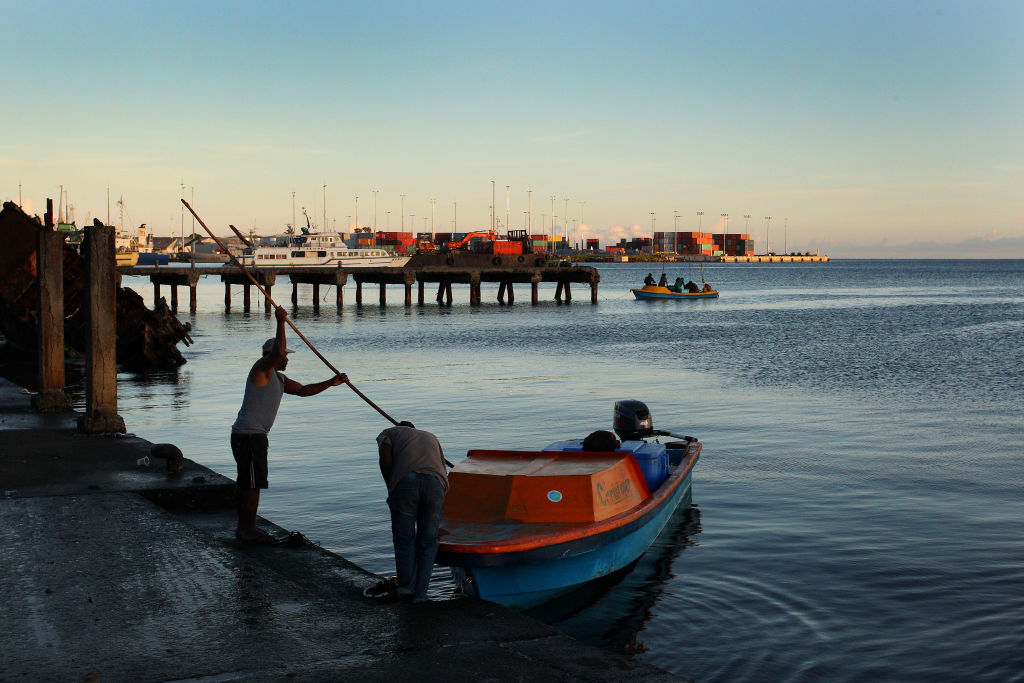
A reading of some of the headlines on China’s new security deal with Solomon Islands might give the impression that a Chinese naval base with assets pointed straight at Australia is a fait accompli and that other Pacific dominos are just waiting to fall. Public anxiety on the issue has risen sharply—unsurprising given that the deal has been caught up in the dynamics of the federal election campaign—with a recent Sydney Morning Herald survey finding that 70% of voters are concerned about it.
The exact terms of the final, signed security agreement haven’t been made public. And Solomon Islands Prime Minister Manasseh Sogavare has assured regional nations including Australia and the US that there will be no Chinese military base in the Solomons and that Australia remains his country’s security partner of choice.
At the same time, the strong US and Australian reactions to the deal, as well as the experience of being visited by US National Security Council Indo-Pacific Coordinator Kurt Campbell, prompted an incensed Sogavare to declare in the Solomon Islands parliament that Australia’s concerns were ‘hysterical’.
He went on to describe Campbell’s statement that the US would ‘respond accordingly’ if ‘steps are taken to establish a de facto permanent military presence, power-projection capabilities, or a military installation’ as a ‘tacit warning of military intervention’ and said that his country had been ‘threatened with invasion’.
But what we do know is that the open-ended nature of the leaked draft agreement allows for a Chinese military presence in Solomon Islands, which is a first for the South Pacific. Beijing has security agreements with Fiji, Vanuatu, Samoa, Cook Islands and Papua New Guinea, but thus far they have been confined to training and equipment provision.
The region will now be watching closely to see if and how militarisation proceeds, and there’s a spectrum of possibilities here.
So far China has provided riot-control training to Solomon Islands police. But the language in the security agreement could allow for a more permanent military or paramilitary presence to safeguard Chinese investment projects, or dual-use ports and airfields that could be used for People’s Liberation Army logistics and replenishment.
A draft maritime cooperation agreement that was leaked on 8 May may give a much clearer picture of China’s intentions. On the face of it, the agreement is dazzling in economic terms, promising deep-sea fishing bases, oil and gas development and undersea mining ventures, wharves, submarine optical cables, shipbuilding and repair, as well as solar, wind and tidal clean-energy projects.
If realised, this would massively expand China’s investment in the Solomons, likely making Beijing its biggest economic partner. China is already Solomon Islands’ biggest trading partner but has been largely absent in terms of overseas development aid, two-thirds of which is provided by Australia at roughly $250 million per year.
But can Sogavare balance the complexities of having mutually antagonistic economic and security partners?
As analysts have pointed out, much of this proposed infrastructure would be dual use. Combined with China’s promised airfield upgrade and the security agreement, these facilities could potentially allow for the kind of PLA power projection that Washington and Canberra have deemed unacceptable, without reaching the level of a standard naval base. Both countries will find it difficult to object to wharves and roads, and to identify the point at which an ‘appropriate’ response might be triggered.
Honiara is certainly betting that Canberra won’t baulk at continuing to provide the capacity-building development aid that will help the Solomon Islands government facilitate this economic package. But given that national budget documents from 2019 onwards also include mentions of China contributing to donor-funded budget lines, there seems to be some hedging here too.
Other Pacific island countries have expressed uneasiness about the potential for this deal to exacerbate great-power political competition in the region. How would Sogavare manage an Australian and Chinese security presence operating in close proximity, in a humanitarian assistance and disaster relief scenario, for example, or if Australia was again asked to come in to help manage rioting that targeted a Chinese economic project with some kind of Chinese security presence in situ?
The region might also have concerns about the highly extractive nature of the proposed projects—with the exception of the energy package—which raises questions about sustainability. A big, permanent Chinese deep-sea fishing fleet based in the Solomons might worry other Pacific island nations with fisheries zones that are hard to police.
And in a region where climate security is existential, the development of the oil and gas deposits that Solomon Islands believes exist in the Shortland Basin, in Guadalcanal’s Iron Bottom Sound and between Isabel and Western provinces is likely to draw fire—particularly since Sogavare has reportedly cited climate change as a motivation for his security deal with China.
For China, dual-use facilities would probably make much more sense than a traditional naval base, which would be a more expensive and overtly aggressive move. In an era of submarine and over-the-horizon missile warfare, a base would need multi-layered air defence for survivability in a conflict. It would also require large numbers of PLA troops to be stationed there, announcing Beijing’s military ambitions in the region in no uncertain terms, which could push neighbouring countries into closer security relationships with China’s strategic rivals.
The dual-use option would combine flexibility and deniability and be useful in keeping the US and Australia guessing about China’s intentions, while also raising the spectre of a military reach towards Australia. All this forces Australia and the US to spend their bandwidth and resources on trying to limit further political and economic influence-building by China in the Solomons and elsewhere in the region.

